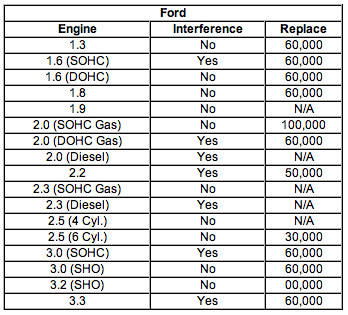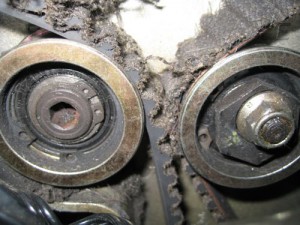Your timing belt should be replaced every 50-70,000 miles. Carmakers have specified the replacement intervals for timing belts. In this database you will find these timing belt replacement intervals along with a little technical information regarding the valve configuration – interference or non-interference. In an interference engine, the valves and piston share the same air space. They never touch, unless your timing belt breaks or skips, and this is a catastrophic failure that requires removing the head and replacing bent valves. Non-interference engines do not risk this contact if the timing belt goes. Nonetheless, either can leave you stranded, so regular timing belt replacement is very important.

Be sure to replace your timing belt at the required intervals for your Daewoo or Daihatsu. Timing belt replacement is crucial to the life of your engine. Interference type engines can suffer expensive damage in the case of timing belt failure. Bent valves are not cheap to replace! Below are the timing belt maintenance intervals and info for Daewoo or Daihatsu cars.





 The failure of a timing belt is one of the most common reasons why cars break down. If you are familiar with the timing belt, how it functions and how to identify whether or not something is wrong with it, then you can prevent serious damage to your car and you’ll know when to replace it. Knowledge about timing belt symptoms will save you from having to experience being stuck on the side of a road because of a broken timing belt.
The failure of a timing belt is one of the most common reasons why cars break down. If you are familiar with the timing belt, how it functions and how to identify whether or not something is wrong with it, then you can prevent serious damage to your car and you’ll know when to replace it. Knowledge about timing belt symptoms will save you from having to experience being stuck on the side of a road because of a broken timing belt.
